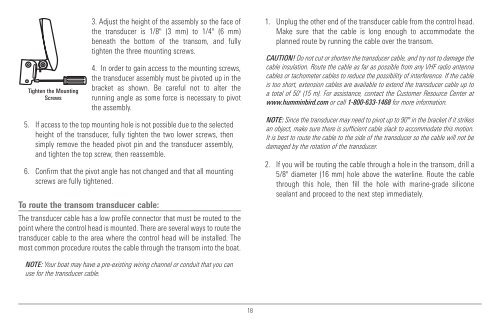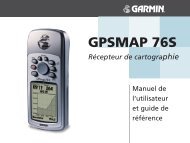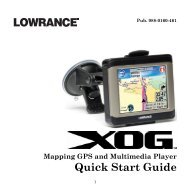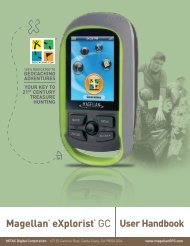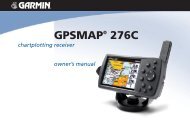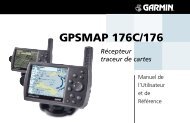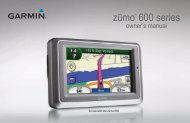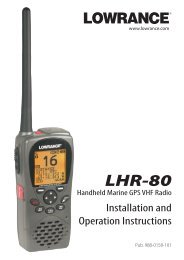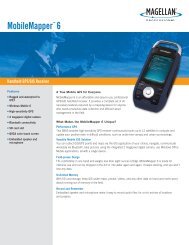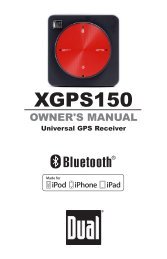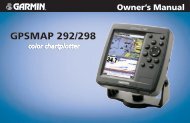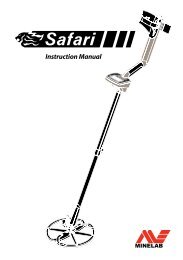Humminbird - Fish Finders and GPS
Humminbird - Fish Finders and GPS
Humminbird - Fish Finders and GPS
You also want an ePaper? Increase the reach of your titles
YUMPU automatically turns print PDFs into web optimized ePapers that Google loves.
Tighten the Mounting<br />
Screws<br />
3. Adjust the height of the assembly so the face of<br />
the transducer is 1/8" (3 mm) to 1/4" (6 mm)<br />
beneath the bottom of the transom, <strong>and</strong> fully<br />
tighten the three mounting screws.<br />
4. In order to gain access to the mounting screws,<br />
the transducer assembly must be pivoted up in the<br />
bracket as shown. Be careful not to alter the<br />
running angle as some force is necessary to pivot<br />
the assembly.<br />
5. If access to the top mounting hole is not possible due to the selected<br />
height of the transducer, fully tighten the two lower screws, then<br />
simply remove the headed pivot pin <strong>and</strong> the transducer assembly,<br />
<strong>and</strong> tighten the top screw, then reassemble.<br />
6. Confirm that the pivot angle has not changed <strong>and</strong> that all mounting<br />
screws are fully tightened.<br />
To route the transom transducer cable:<br />
The transducer cable has a low profile connector that must be routed to the<br />
point where the control head is mounted. There are several ways to route the<br />
transducer cable to the area where the control head will be installed. The<br />
most common procedure routes the cable through the transom into the boat.<br />
1. Unplug the other end of the transducer cable from the control head.<br />
Make sure that the cable is long enough to accommodate the<br />
planned route by running the cable over the transom.<br />
CAUTION! Do not cut or shorten the transducer cable, <strong>and</strong> try not to damage the<br />
cable insulation. Route the cable as far as possible from any VHF radio antenna<br />
cables or tachometer cables to reduce the possibility of interference. If the cable<br />
is too short, extension cables are available to extend the transducer cable up to<br />
a total of 50' (15 m). For assistance, contact the Customer Resource Center at<br />
www.humminbird.com or call 1-800-633-1468 for more information.<br />
NOTE: Since the transducer may need to pivot up to 90° in the bracket if it strikes<br />
an object, make sure there is sufficient cable slack to accommodate this motion.<br />
It is best to route the cable to the side of the transducer so the cable will not be<br />
damaged by the rotation of the transducer.<br />
2. If you will be routing the cable through a hole in the transom, drill a<br />
5/8" diameter (16 mm) hole above the waterline. Route the cable<br />
through this hole, then fill the hole with marine-grade silicone<br />
sealant <strong>and</strong> proceed to the next step immediately.<br />
NOTE: Your boat may have a pre-existing wiring channel or conduit that you can<br />
use for the transducer cable.<br />
18


